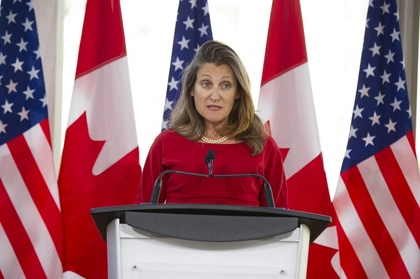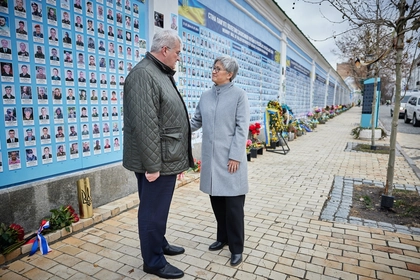Editor’s note: Dr. Mohammad Zahoor is a former owner of the Kyiv Post (2009 - 2018)
The recent visit of Ukrainian President Volodymyr Zelensky to the United States for the 79th United Nations General Assembly had all the makings of a diplomatic disaster. The timing was precarious – just weeks before the highly contentious US presidential elections. His agenda seemed ambitious, even risky: meet with President Joe Biden, former President Donald Trump, presidential candidate from the Democratic Party, Kamala Harris, and several members of both the Democratic and Republican parties.
JOIN US ON TELEGRAM
Follow our coverage of the war on the @Kyivpost_official.
The initial leg of Zelensky’s tour, however, was met with significant political tension. His Sept. 22, 2024, visit to the Scranton Army Ammunition Plant in Pennsylvania stirred controversy. The factory produces 155mm artillery shells vital to Ukraine’s war effort, and Zelensky’s visit was a gesture of gratitude to the American people. But the optics were complicated: he was accompanied only by Democratic politicians, including Pennsylvania Governor Josh Shapiro and US Senator Bob Casey. Republicans were quick to criticize the visit as partisan, citing the exclusion of GOP lawmakers and the use of taxpayer funds, particularly since Zelensky had flown in on a C-17 Air Force transport plane.
Republicans saw the Scranton event as a political move to bolster Democratic candidates. Rep. Johnson penned a letter accusing Zelensky of turning the visit into a “politically contested battleground state” event designed to support Kamala Harris’s candidacy. Johnson’s critique was echoed by House Oversight and Accountability Chair James Comer, who vowed to investigate the potential misuse of government resources, accusing Zelensky of interfering in US elections.

Canada’s Chrystia Freeland – A Personal View
The turbulence continued, with prominent Republicans like Donald Trump and his running mate, J.D. Vance, voicing strong opposition. Zelensky was particularly criticized for labeling Vance “too radical,” noting that the senator was willing to concede Ukrainian territory to Russia. Trump, meanwhile, dismissed any plans to meet with Zelensky, accusing him of refusing to strike a deal with Russia and ending the war.
Turning the tide
Despite the rocky start, Zelensky and his team deftly recalibrated their strategy. In a significant move, they arranged a bipartisan meeting with a group of US lawmakers. Both Democrats and Republicans participated, and the atmosphere of the meeting was described as positive and constructive. Lawmakers came away from the meeting reaffirming their commitment to supporting Ukraine.
Rep. Steny Hoyer expressed optimism following the meeting, stating, “There was bipartisan support for success in Ukraine, which is critically important.” Meanwhile, Rep. Brian Fitzpatrick noted that Zelensky provided a comprehensive update on Ukraine’s needs, the situation on the battlefield, and a list of individuals and businesses evading sanctions.
Zelensky’s team managed to downplay the absence of certain Republicans, including Johnson, as mere scheduling conflicts. The turning point came when Zelensky secured a private meeting with Donald Trump at Trump Tower in New York. After days of speculation about whether the meeting would happen, Trump praised Zelensky, citing a “very good relationship” with the Ukrainian leader. The meeting was an unexpected victory for Zelensky, given Trump’s initial refusal to engage.
During their discussion, Trump emphasized that a resolution to the conflict could be achieved quickly if he were elected, while Zelensky reaffirmed that Putin could not be allowed to win the war. The meeting demonstrated Zelensky’s ability to navigate the tricky waters of US politics, securing commitments from both political sides.
A diplomatic masterstroke
In addition to his political wins, Zelensky’s visit bore tangible results for Ukraine. Democratic presidential candidate Kamala Harris expressed her unwavering support for Ukraine. President Joe Biden went a step further, announcing an $8 billion aid package for Ukraine. This package included $5.5 billion in military assistance from the Department of Defense’s stockpiles, as well as $2.4 billion dedicated to air defense, munitions, and training to help Kyiv continue its fight against Russia.
While the visit began with controversy and partisan friction, it ultimately culminated in a diplomatic triumph for Zelensky and his team. What could have been a political misstep just six weeks ahead of the US elections turned into a major diplomatic victory, securing continued US support for Ukraine’s war effort and bolstering Zelensky’s position on the global stage.
The views expressed in this opinion article are the author’s and not necessarily those of Kyiv Post.
You can also highlight the text and press Ctrl + Enter






